Charles M. Kozierok The TCP-IP Guide
Подождите немного. Документ загружается.

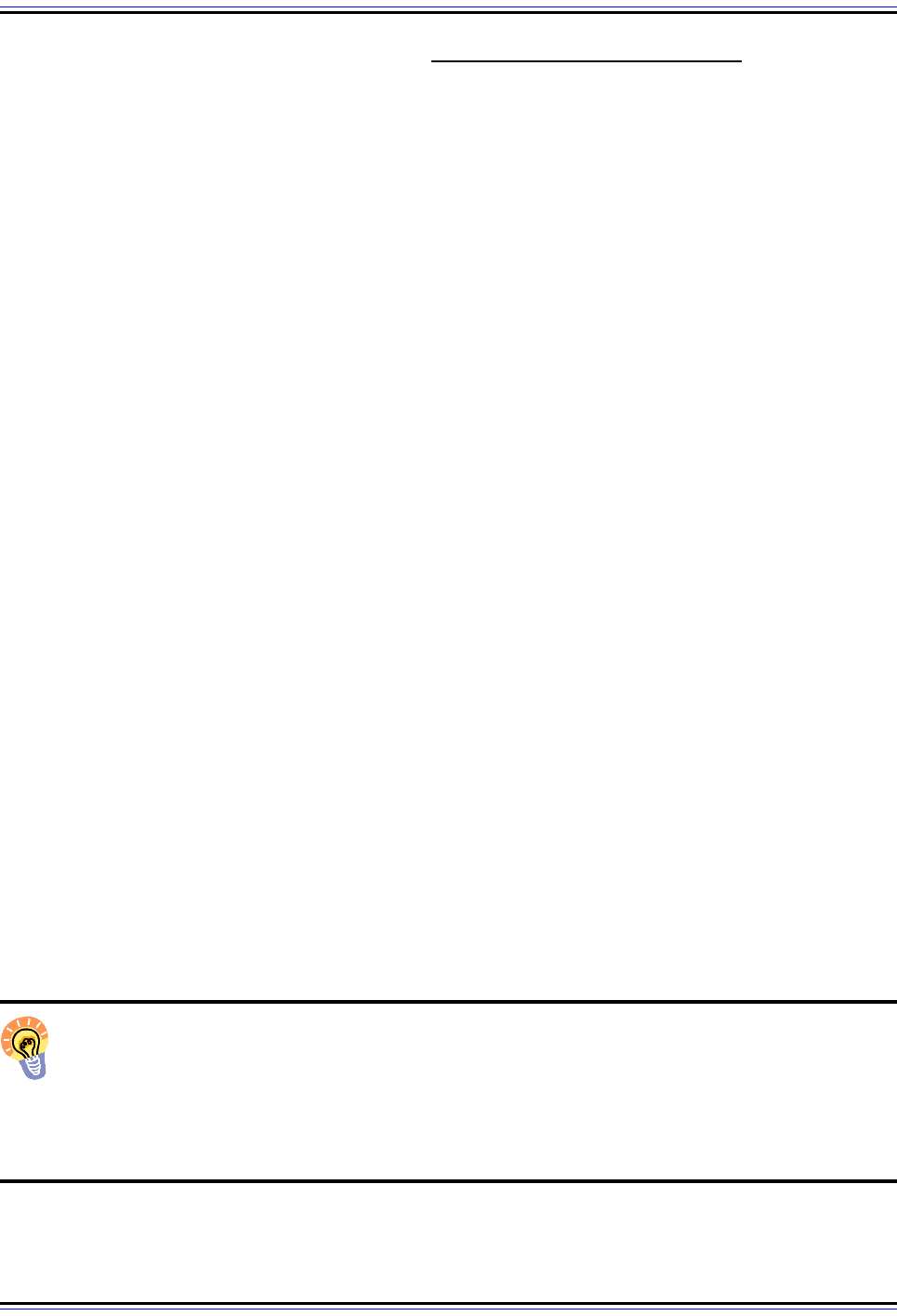
The TCP/IP Guide - Version 3.0 (Contents) ` 1451 _ © 2001-2005 Charles M. Kozierok. All Rights Reserved.
In February 1985, RFC 937 was published: Post Office Protocol - Version 2. POP2
expanded the capabilities of POP by defining a much richer set of commands and replies.
This includes the important ability of being able to read only certain messages, rather than
dumping a whole mailbox. Of course, this came at the cost of a slight increase in protocol
complexity, but POP2 was still quite simple as protocols go.
These two early versions of POP were used in the mid-1980s, but not very widely. Again,
this is simply because the need for an offline e-mail access protocol was limited at that time;
most people were not on the Internet before the 1990s.
In 1988, RFC 1081 was published, describing version 3 of the Post Office Protocol (POP3).
By this time, the personal computer (PC) was transitioning from a curiosity to a place of
importance in the worlds of computing and networking. POP3 was based closely on POP2,
but refined and enhanced with the idea of providing a simple and efficient way for PCs and
other clients not normally connected to the Internet to access and retrieve e-mail.
Development on POP3 continued through the 1990s, with several new RFCs published
every couple of years. RFC 1081 was obsoleted by, in turn, RFCs 1225, 1460, 1725 and
1939. Despite the large number of revisions, the protocol itself has not changed a great
deal since 1988; these RFCs contain only relatively minor tweaks to the original description
of the protocol. RFC 1939 was published in 1996 and POP3 has not been revised since that
time, though a few subsequent RFCs define optional extensions and additions to the basic
protocol, such as alternative authentication mechanisms.
While POP3 has been enhanced and refined, its developers have remained true to the
basic idea of a very simple protocol for quick and efficient e-mail transfer. POP3 is a
straight-forward state-based protocol, with a client and server proceeding through three
stages during a session. A very small number of commands are defined to perform simple
tasks, and even after all the changes and revisions described above, the protocol has a
minimum of “fluff”.
For reasons that are unclear to me, almost everyone refers to the Post Office Protocol with
its version number; that is, they say “POP3” instead of “POP”. This is true despite most
people not using version numbers with many other protocols, and almost nobody using any
other version of POP anyway. But it is the convention, and I will follow it in the rest of this
section.
Key Concept: The Post Office Protocol (POP) is currently the most popular TCP/IP
e-mail access and retrieval protocol. It implements the offline access model, allowing
users to retrieve mail from their SMTP server and use it on their local client
computers. It is specifically designed to be a very simple protocol and has only small
number of commands. The current revision of POP is version 3, and the protocol is usually
abbreviated POP3 for that reason.
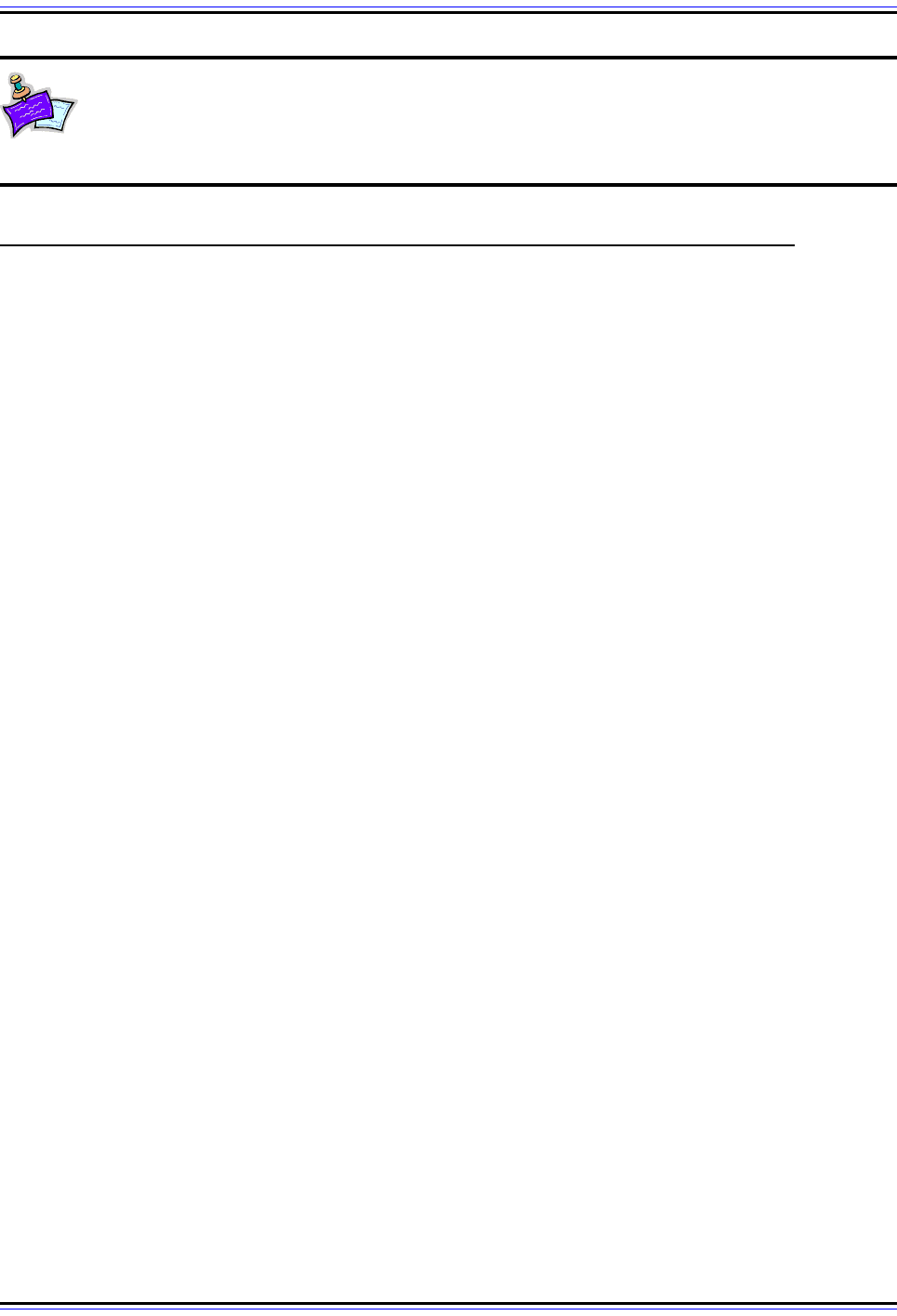
The TCP/IP Guide - Version 3.0 (Contents) ` 1452 _ © 2001-2005 Charles M. Kozierok. All Rights Reserved.
Note: There are some implementations of POP that attempt to implement the
disconnected access model, with limited success. More often, however, IMAP is
used for this purpose, since it is better suited to that access model. See the
overview of IMAP for more details.
POP3 General Operation, Client/Server Communication and Session States
As I mentioned in the previous topic, the Post Office Protocol was designed to perform only
one main function, and to do it quickly and simply: allow a client computer to access and
retrieve e-mail from a server. The operation of the protocol is simple and straight-forward,
which is good news for you, the person trying to understand how it works.
Client/Server Communication
POP3 is a regular TCP/IP client/server protocol. To provide access to mailboxes, POP3
server software must be installed and continuously running on the server where the
mailboxes are located. This does not necessarily have to be the same physical hardware
device that runs the SMTP server software that receives mail for those boxes—a
mechanism such as NFS may be used to allow the POP3 and SMTP servers to both “see”
mailboxes locally. POP3 clients are regular end-user e-mail programs that make connec-
tions to POP3 servers to get mail; examples include Microsoft Outlook, Eudora Email and
so forth.
POP3 uses the Transmission Control Protocol (TCP) for communication, to ensure the
reliable transfer of commands, responses and message data. POP3 servers “listen” on
well-known port number 110 for incoming connection requests from POP3 clients. After a
TCP connection is established, the POP3 session is activated. The client sends commands
to the server, which replies with responses and/or e-mail message contents.
Commands and Response Codes
POP3 commands are three or four letters long and are case-insensitive. They are all sent in
plain ASCII text and terminated with a “CRLF” sequence, just as with FTP and SMTP
commands. POP3 replies are also textual, but the protocol does not use the complex three-
digit reply code mechanism of FTP (and SMTP). In fact, it defines only two basic responses:
☯ +OK: A positive response, sent when a command or action is successful; and
☯ -ERR: A negative response, sent to indicate that an error has occurred.
These messages may be accompanied by explanatory text, especially in the case of an
-ERR response, to provide more information about the nature of the error.
Session States
POP3 is described in terms of a finite state machine (FSM), with a session transitioning
through three states during the course of its “lifetime”, as shown in Figure 306.
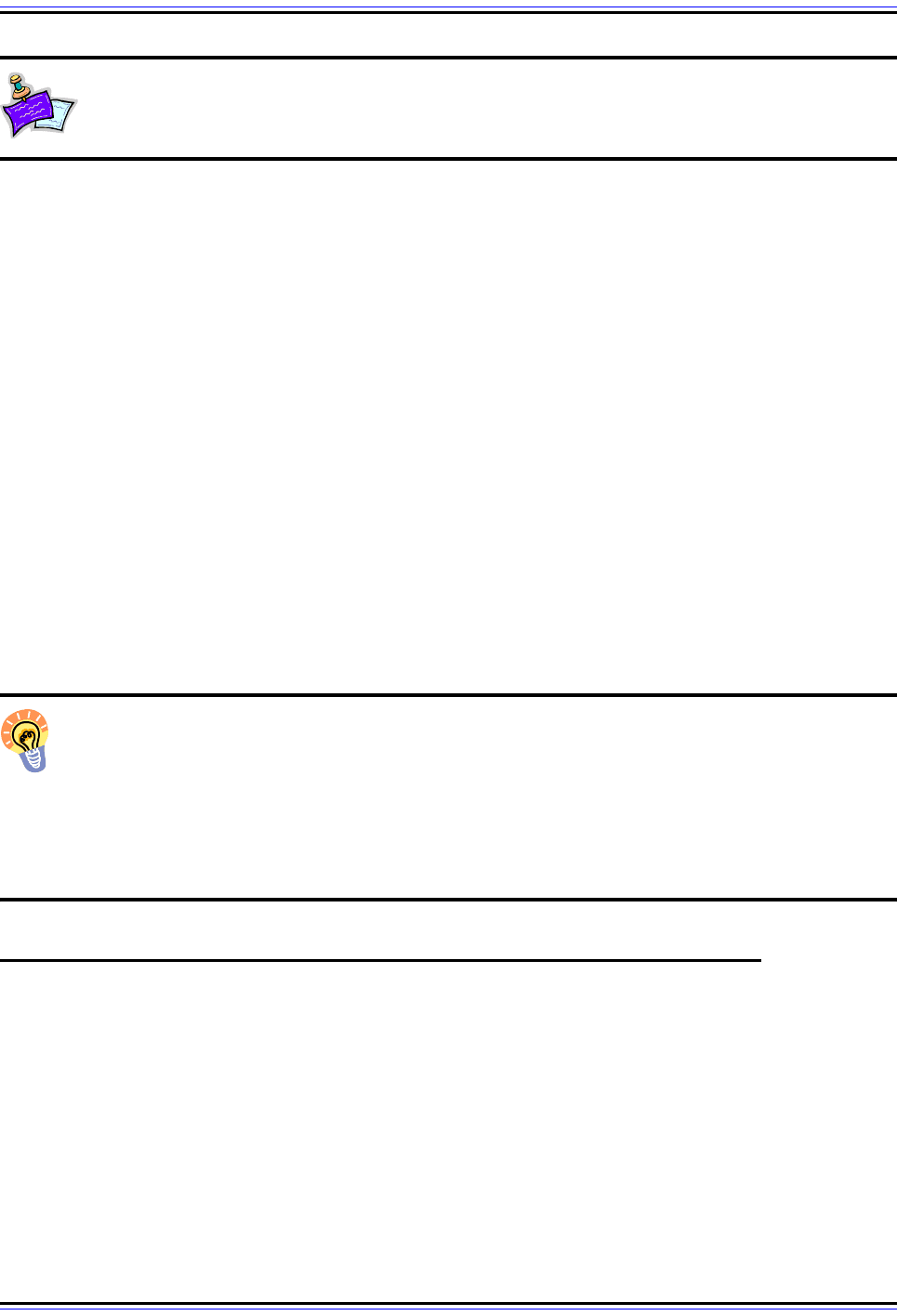
The TCP/IP Guide - Version 3.0 (Contents) ` 1453 _ © 2001-2005 Charles M. Kozierok. All Rights Reserved.
Note: I describe the concepts behind Finite State Machines in the topic describing
the TCP FSM.
Before you get too intimidated, realize that unlike the FSMs of protocols like TCP, this one
really is simple, because it is linear. The session goes through each state once and only
once, in the following sequence:
1. Authorization State: The server provides a greeting to the client to indicate that it is
ready for commands. The client then provides authentication information to allow
access to the user's mailbox.
2. Transaction State: The client is allowed to perform various operations on the mailbox.
These include listing and retrieving messages, and marking retrieved messages for
deletion.
3. Update State: When the client is done with all of its tasks and issues the QUIT
command, the session enters this state automatically, where the server actually
deletes the messages marked for deletion in the Transaction state. The session is then
concluded and the TCP connection between the two terminated.
POP3 is designed so that only certain commands may be sent in each of these states. The
next three topics describe the activities that take place in these three states, including the
commands that are issued by the client in each.
Key Concept: POP3 is a client/server protocol that is described using a simple
linear sequence of states. A POP3 session begins with a POP3 client making a TCP
connection to a POP3 server, at which point the session is in the Authorization state.
After successful authentication, the session moves to the Transaction state, where the
client can perform mail access transactions. When it is done, the client ends the session
and the Update state is entered automatically, where cleanup functions are performed and
the POP3 session ended.
POP3
Authorization State: User Authentication Process and Commands
A session between a POP3 client and a POP3 server begins when the client sends a TCP
connection request to the server. The connection is established using the standard TCP
“three-way handshake”, and the POP3 session commences. The first of the three states of
a POP3 session is the Authorization state, which is responsible for authenticating the POP3
client with the server.
When the session first enters this state, the server sends a greeting message to the client.
This tells the client that the connection is alive and ready for the client to send the first
command. An example of such a greeting would be:
+OK POP3 server ready
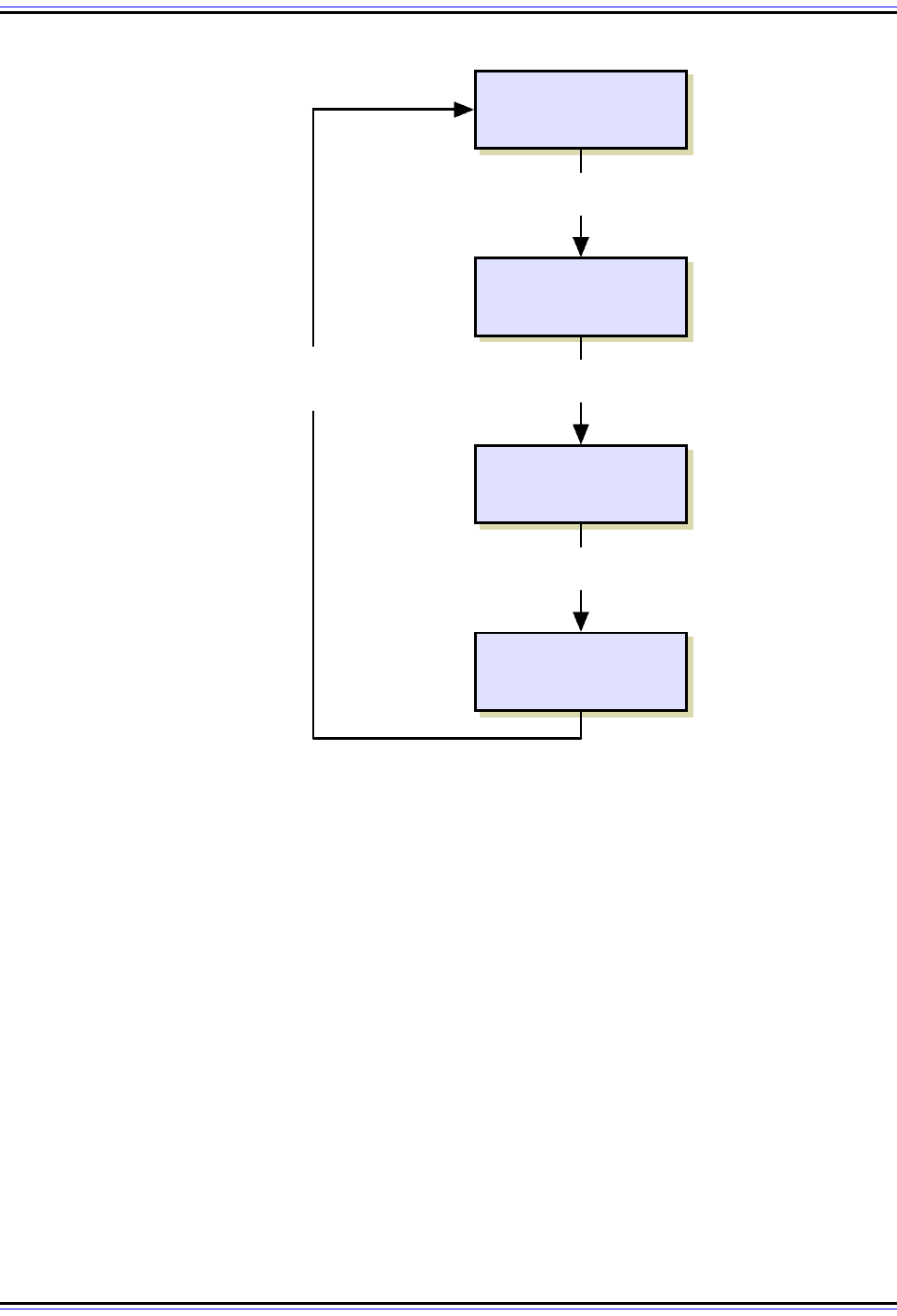
The TCP/IP Guide - Version 3.0 (Contents) ` 1454 _ © 2001-2005 Charles M. Kozierok. All Rights Reserved.
The client is now required to authenticate the user who is trying to access a mailbox. This
both proves that the user has the right to access the server, and identifies the user so the
server knows which mailbox is being requested.
Standard POP3 Authentication
The normal method of authorization in POP3 is a standard “username / password” login.
This is pretty much identical to how a login is performed in FTP; even the commands are
the same. First the client issues a USER command along with the user's mailbox name (his
or her user name or e-mail address). The server responds with an intermediate acknowl-
edgment. The client then uses the PASS command to send the user's password. Assuming
the login is valid, the server responds to the client with an acknowledgment that indicates
successful authentication. The response will also typically specify the number of messages
waiting for the user in the mailbox. This process is illustrated in Figure 307.
Figure 306: Post Office Protocol (POP3) Finite State Machine
POP uses a finite state machine to describe its operation, but it is very simple because it is linear. Once a TCP
connection is established between a POP3 client and POP3 server, the session proceeds through three states
in sequence, after which the connection is terminated.
(No Connection)
AUTHORIZATION
TRANSACTION
UPDATE
Successful Authentication
Establish TCP Connection
Done With Transactions;
Issue QUIT Command
Delete Marked Messages,
Release Resources,
Terminate Connection
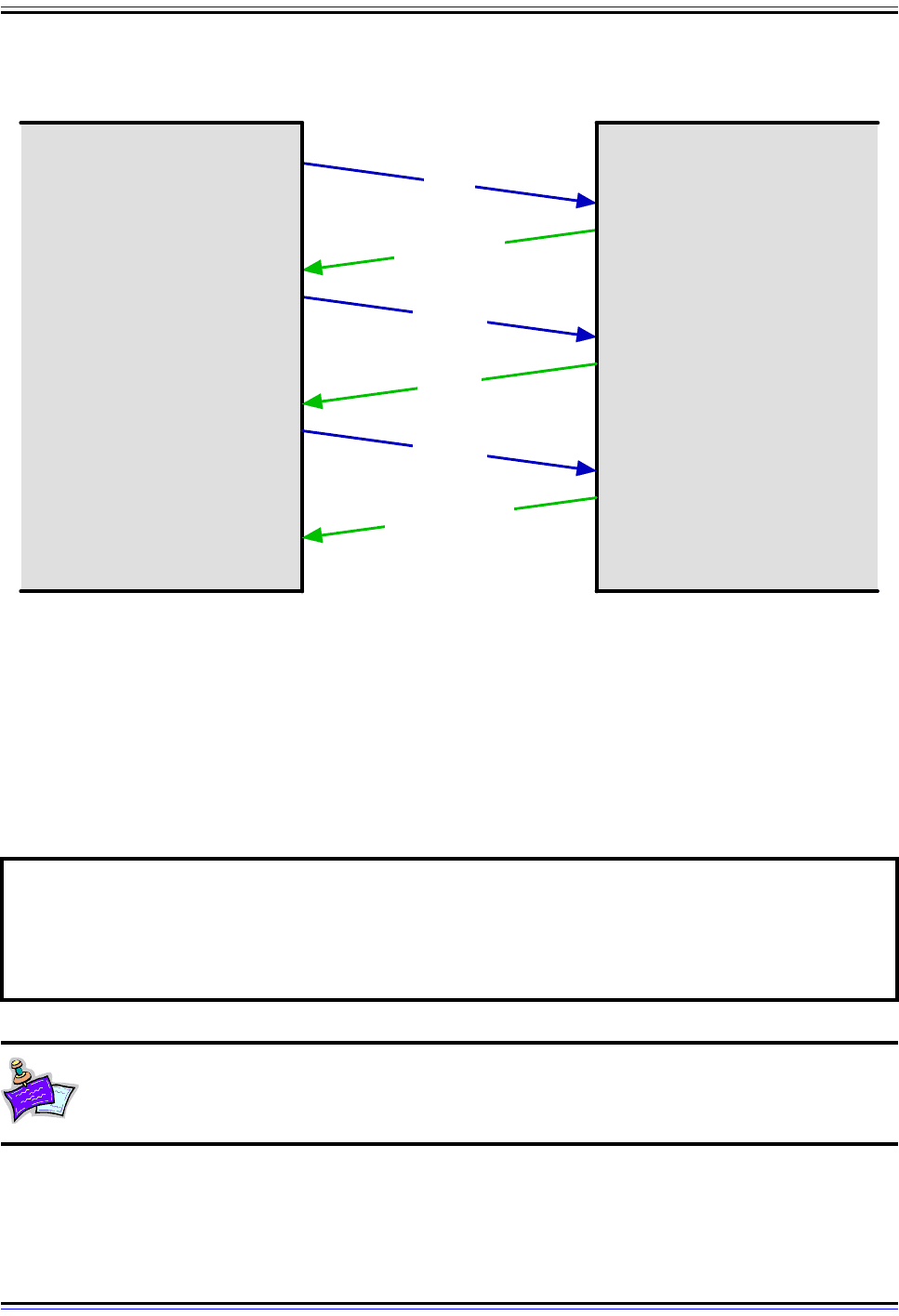
The TCP/IP Guide - Version 3.0 (Contents) ` 1455 _ © 2001-2005 Charles M. Kozierok. All Rights Reserved.
Table 257 shows an example POP3 authorization, with the client's commands highlighted
and the server's responses in italics.
Note: Some servers may require only the name of the user (“jane”) while others
require the full e-mail address as shown in the example. Also, I have not shown
Jane's password in Table 257; that wouldn't be very nice, would it? ☺
Figure 307: Post Office Protocol (POP3) User Authentication Process
Once the TCP connection is established from the client to the server, the server responds with a greeting
message, and the simple POP3 authentication process begins. The client sends a user name and password
to the server using the USER and PASS commands, and the server evaluates the information to determine
whether or not it will allow the client access.
Table 257: Example POP3 Authorization
+OK POP3 server ready
USER jane@somewhereelse.com
+OK
PASS *******
+OK jane@somewhereelse.com has 3 messages
POP3 ServerPOP3 Client
(TCP)
1. Establish TCP
Connection To Server
2. Establish TCP Connection,
Send +OK "Ready" Reply
3. Receive "Ready" Reply,
Send User Name
+OK (Ready)
USER
5. Receive Reply,
Send Password
7. Receive "Greeting"
Reply, Transition to
TRANSACTION State
4. Receive User Name,
Send +OK Reply
+OK
PASS
6. Receive Password, Send
+OK "Greeting" Reply With
Number Of Inbox Messages
+OK (Greeting)
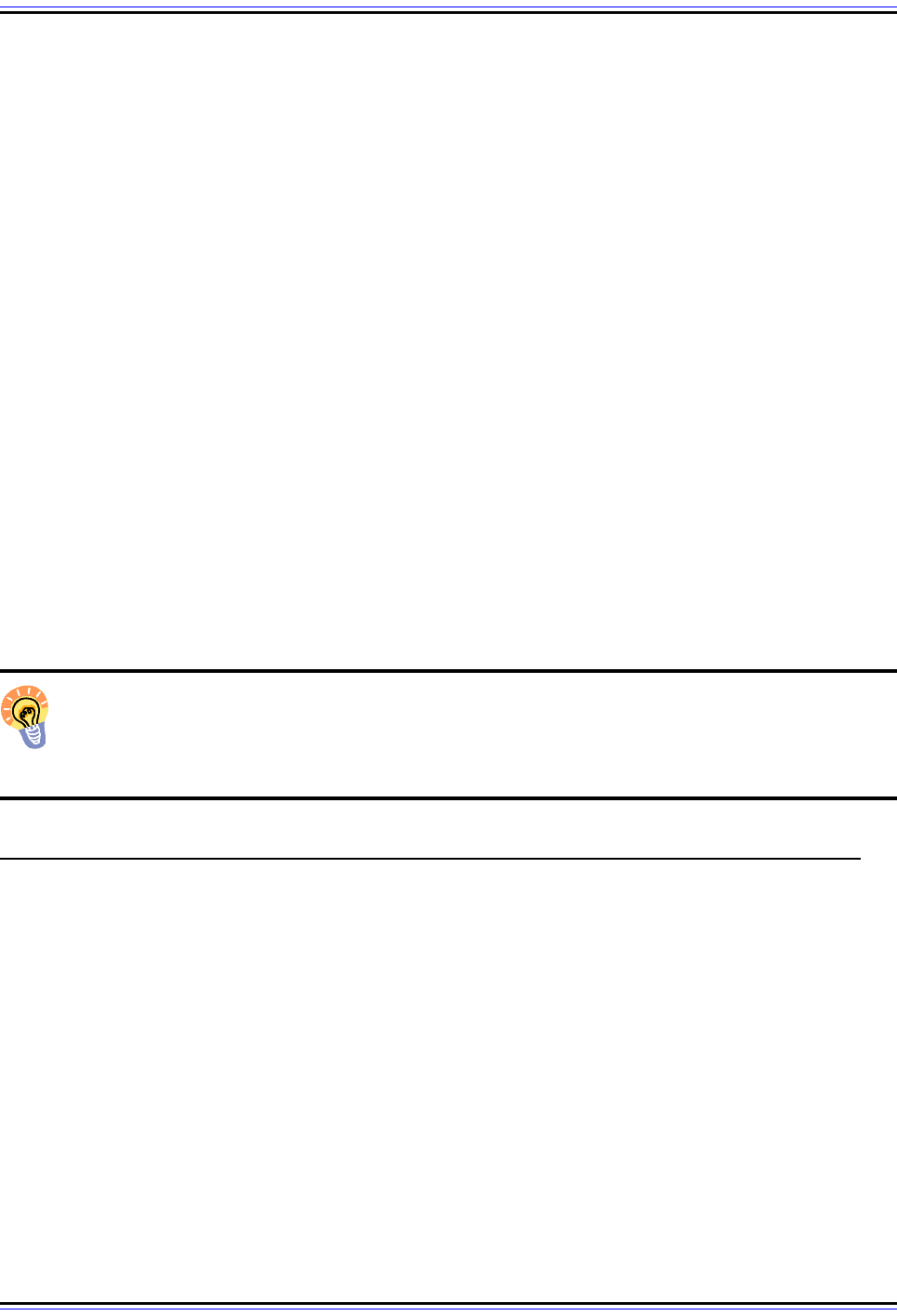
The TCP/IP Guide - Version 3.0 (Contents) ` 1456 _ © 2001-2005 Charles M. Kozierok. All Rights Reserved.
If authorization is successful, the POP3 session transitions to the Transaction state where
mail access commands can be performed. If the user name or password are incorrect, an
error response is given and the session cannot proceed. The authorization may also fail
due to technical problems, such as an inability by the server to lock the mailbox (perhaps
due to new mail arriving via SMTP).
Alternative Authentication Using APOP
Since user/password authorization is considered by many people to be insufficient for the
security needs of modern internetworks, the POP3 standard also defines an alternative
authentication method, using the APOP command. This is a more sophisticated technique
based on the MD5 “message digest” encryption algorithm.
If the server supports this technique, in its opening greeting it provides a string indicating a
timestamp that is unique for each POP3 session. The client then performs an MD5 calcu-
lation using this timestamp value and a “shared secret” known by the server and client. The
result of this calculation is included in the client's APOP command. If it matches the server's
calculation, authentication is successful; otherwise the session remains in the Authorization
state.
The Post Office Protocol was also designed to allow it to be extended through the addition
of other authentication mechanisms. This process is based on the use of the optional AUTH
command, as described in RFC 1734.
Key Concept: A POP3 session begins in the Authorization state, where the client
device is expected to authenticate with the server. By default, POP3 uses only a
simple username/password authentication method. Optional authentication methods
are also defined for applications requiring more security.
POP3
Transaction State: Mail and Information Exchange Process and Commands
Once the POP3 client has successfully authenticated the user who is performing mailbox
access, the session transitions from the Authorization state to the Transaction state. There's
no real mystery what this phase of the connection is all about: it is where the POP3 client
issues the commands that perform mailbox access and message retrieval transactions.
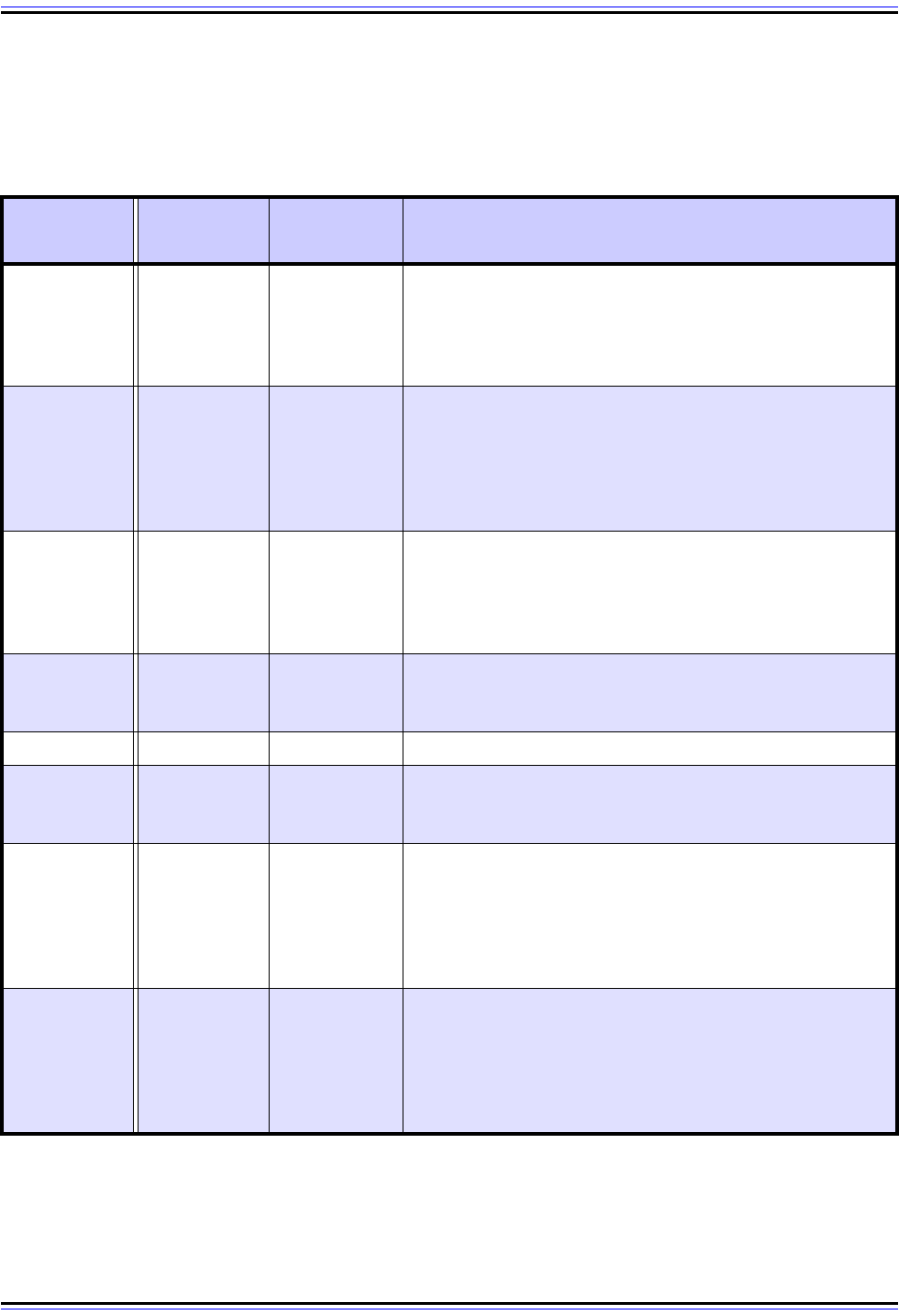
The TCP/IP Guide - Version 3.0 (Contents) ` 1457 _ © 2001-2005 Charles M. Kozierok. All Rights Reserved.
POP3 Transaction Commands
Most of the commands defined in POP3 are valid only in the Transaction state. Table 258
lists each of them, in the order in which they appear in RFC 1939.
Table 258: POP3 Transaction Commands
Command
Code
Command Parameters Description
STAT Status None
Requests status information for the mailbox. The server
will normally respond telling the client the number of
messages in the mailbox, and the number of bytes of data
it contains. Optionally, more information may also be
returned.
LIST List Messages
Optional
message
number
Lists information for the messages in a mailbox; generally
this means showing the message number and its size. If a
message number is given, only that message's infor-
mation is provided; otherwise, the full contents of the
mailbox are described, one line at a time, with a line
containing just a single period at the end.
RETR Retrieve
Message
number
Retrieves a particular message from the mailbox. The
server responds with a standard “+OK” message and then
immediately sends the message in RFC 822 format, one
line at a time. A line with a period by itself is sent after the
last line.
DELE Delete
Message
number
Marks a message as deleted. Once deleted, any further
attempt to access a message (using LIST or RETR for
example) results in an error.
NOOP No Operation None Does nothing; the server just returns a +OK reply.
RSET Reset None
Resets the session to the state it was in upon entry to the
Transaction state. This includes “undeleting” any
messages already marked for deletion.
TOP
Retrieve
Message Top
Message
number and
number of
lines
Allows a client to retrieve only the beginning of a message.
The server returns the headers of the message and only
the first N lines where N is the number of lines specified.
This command is optional and may not be supported by all
servers.
UIDL
Unique ID
Listing
Optional
message
number
If a message number was specified, returns a unique
identification code for that message; otherwise, returns an
identification code for each message in the mailbox.
This command is optional and may not be supported by all
servers.

The TCP/IP Guide - Version 3.0 (Contents) ` 1458 _ © 2001-2005 Charles M. Kozierok. All Rights Reserved.
Typical POP3 Mail Exchange Sequence
The Transaction state is relatively “unstructured” in that commands do not need to be
issued in any particular order to meet the requirements of the standard. However, there is a
natural progression to how a mailbox is retrieved, and that means the commands are
usually used in the following way:
1. The client issues a STAT command to see the number of messages in the mailbox.
2. The client issues a LIST command and the server tells it the number of each message
to be retrieved.
3. The client issues a RETR command to get the first message and if successful, marks it
for deletion with DELE. The client uses RETR/DELE for each successive message.
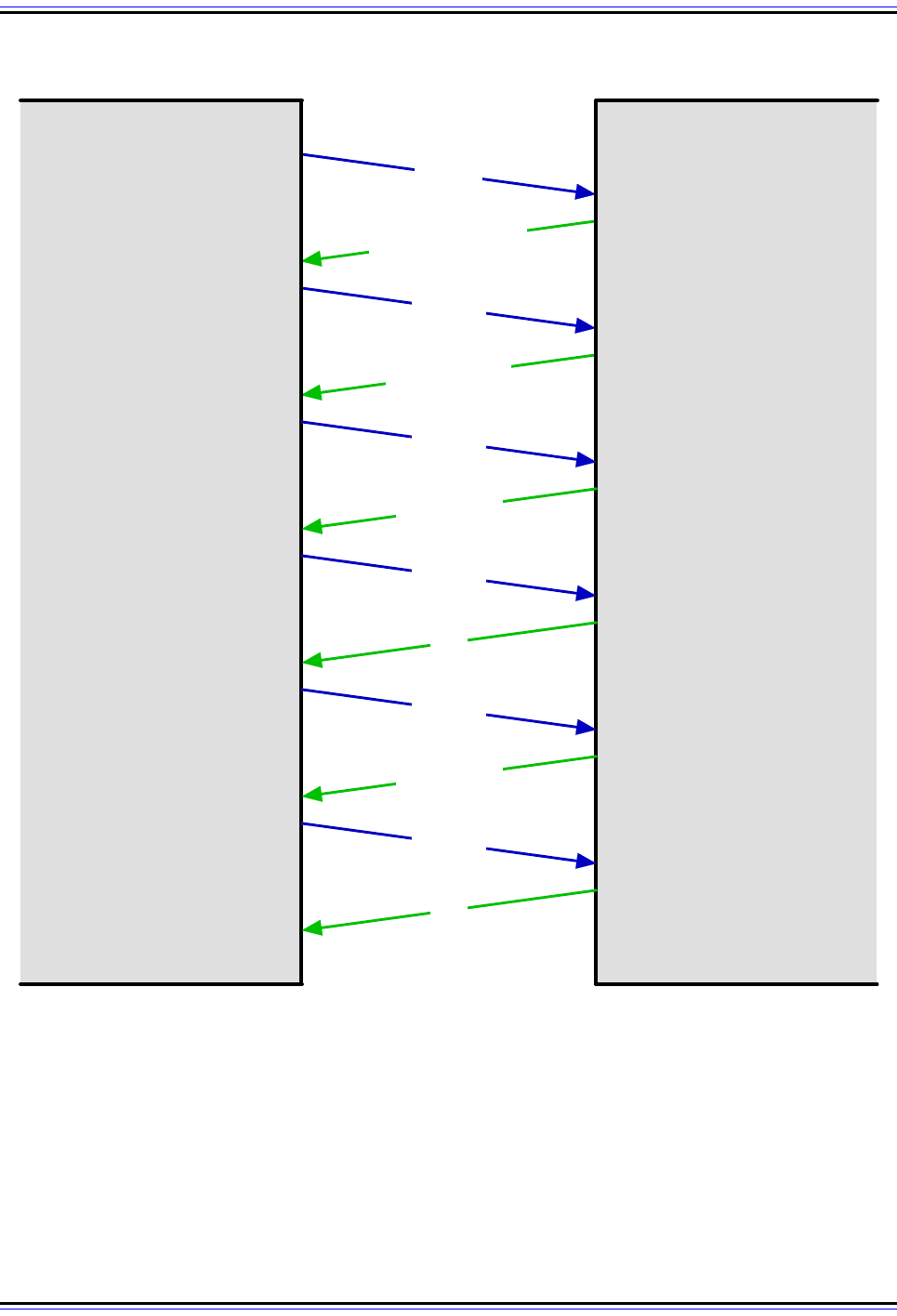
The TCP/IP Guide - Version 3.0 (Contents) ` 1459 _ © 2001-2005 Charles M. Kozierok. All Rights Reserved.
Figure 308: Post Office Protocol (POP3) Mail Exchange Process
This diagram shows the typical exchange of commands and replies employed by a POP3 client to retrieve e-
mail from a POP3 server. The STAT command is used to get mailbox statistics, followed by the LIST
command to obtain a list of message numbers. Each message in turn is then retrieved using RETR and
marked for deletion by DELE. (Messages are not actually deleted until the Update state is entered.)
POP3 ServerPOP3 Client
STAT
1. Request Mailbox Status
2. Receive STAT; Send +OK
Reply, Mailbox Size and
Number of Messages
4. Receive LIST; Send +OK
Reply, List of Message
Numbers and Sizes
3. Receive Statistics; Request
List of Messages In Mailbox
+OK
(Mailbox Statistics)
LIST
5. Re ce i ve Me ssa ge L i st,
Retrieve Message Number 1
+OK
(Message List)
RETR 1
6. Receive RETR;
Send +OK Reply, Then
Me ssa g e Te x t
+OK
(Message 1)
7. Receive Successful Reply,
Delete Message 1
DELE 1
8. Receive DELE; Mark
Message For Deletion,
Send +OK Reply
+OK
9. Receive Successful Reply,
Retrieve Message Number 2
RETR 2
10. Receive RETR;
Send +OK Reply, Then
Me ssa g e Te x t
+OK
(Message 2)
11. Receive Successful Reply,
Delete Message 2
DELE 2
12. Receive DELE; Mark
Message For Deletion,
Send +OK Reply
+OK
13. Receive Successful Reply,
Perform Other Transactions...

The TCP/IP Guide - Version 3.0 (Contents) ` 1460 _ © 2001-2005 Charles M. Kozierok. All Rights Reserved.
Table 259 and Figure 308 show a sample access sequence for a mailbox containing two
messages that are a total of 574 bytes; the client's commands are highlighted and the
server's responses are in italics.
The exact message sent in reply to each command is server-dependent; some just say
“+OK” while others provide more descriptive text as I have done here for the responses to
the DELE command.
In some cases, a POP3 client may be configured to not delete messages after retrieving
them. This is useful, for example, when Web-based access is being combined with a
conventional e-mail client program.
Key Concept: After successful authorization, the POP3 session transitions to the
Transaction state, where the client actually accesses e-mail messages on the server.
The client normally begins by first retrieving statistics about the mailbox from the
server, and obtaining a list of the messages in the mailbox. The client then retrieving each
message one at a time, marking each retrieved message for deletion on the server.
Table 259: Example POP3 Mail Exchange Process
STAT
+OK 2 574
LIST
+OK
1 414
2 160
.
RETR 1
+OK
(Message 1 is sent)
.
DELE 1
+OK message 1 deleted
RETR 2
+OK
(Message 2 is sent)
.
DELE 2
+OK message 2 deleted
QUIT
